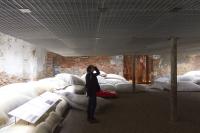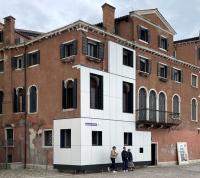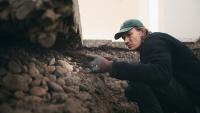Oscillating Spaces
The Rhône Glacier, located high in the Swiss Alps and accessible via the Furka Pass, can only be visited from the summer solstice to the autumnal equinox, roughly 120 days a year. For the rest of the year, time stays still: the pass is closed, the landscape is covered with snow, and there are no human visitors. Despite the limited time it can be accessed, the Rhône Glacier and the Furka Pass are layered with natural and cultural histories. The site is shaped by the entanglement between the environment, spirituality, and local traditions; the genesis of glaciology; military and transportation infrastructure; Alpine tourism; and the construction of the sublime.
Oscillating Spaces looks to the Rhône Glacier—undergoing fast melting and transformation processes—as a case study to reflect on environmental challenges in a constantly oscillating site. Juxtaposing glacier cartography, photography, film, ecclesiastical documents, tourist souvenirs, and architectural archives, the exhibition questions the role of architecture when confronted with a shifting climate, an unstable landscape, and a site that possesses a life of its own. The research also incorporates the work of contemporary art and architecture practices whose works document the Alpine landscape, responding to and raising awareness about the complex consequences of glacier recession for plant, animal, and human life.

Still image from a film by Aufdi Aufdermauer of the Furka Pass during winter (1989), selected by Anneke Abhelakh © Aufdi Aufdermauer
- Quand
- 25 April to 26 October 2025
- Où
-
Canadian Centre for Architecture
1920, rue Baile
H3H 2S6 Montreal, Canada - Organisateur
- CCA – Canadian Centre for Architecture
- Lien
- More information




